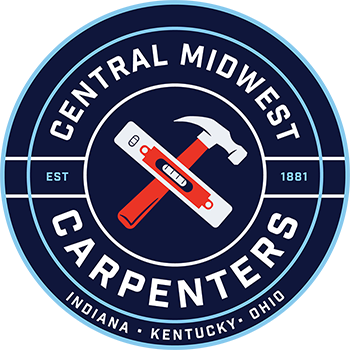NEWS
HOT ITEM


Recent News
 2024 Indiana Kentucky Graduate Speaker – Kyle HarveyMarch 28, 2025 - 1:49 pm
2024 Indiana Kentucky Graduate Speaker – Kyle HarveyMarch 28, 2025 - 1:49 pm Military Outreach Makes Big ImpactMarch 24, 2025 - 3:29 pm
Military Outreach Makes Big ImpactMarch 24, 2025 - 3:29 pm 2025 Central Midwest Sisterhood UpdateMarch 3, 2025 - 5:13 pm
2025 Central Midwest Sisterhood UpdateMarch 3, 2025 - 5:13 pm Craft Spotlight – Justin RogersFebruary 26, 2025 - 4:44 pm
Craft Spotlight – Justin RogersFebruary 26, 2025 - 4:44 pm Ohio’s Newest Journey-Level Carpenters: Class of 2025February 25, 2025 - 12:55 pm
Ohio’s Newest Journey-Level Carpenters: Class of 2025February 25, 2025 - 12:55 pm Craft Spotlight – Brandon HuffmanFebruary 19, 2025 - 3:26 pm
Craft Spotlight – Brandon HuffmanFebruary 19, 2025 - 3:26 pm Craft Spotlight – Ron HeimelFebruary 5, 2025 - 5:14 pm
Craft Spotlight – Ron HeimelFebruary 5, 2025 - 5:14 pm


Founding A National Union
/0 Comments/in News /by IKORCCThe Chicago convention was the brainchild of Peter J. McGuire, a 29-year-old carpenter who was to become one of the great labor leaders of the 19th century. A product of the tenements of New York City’s lower East Side, McGuire decided to devote his life to the cause of labor at an early age.
The union grew gradually, from a membership of 2,042 in 1881 to 5,789 in 1885. Some cities were well organized while others remained entirely non-union. McGuire worked 18 hours a day to keep the union alive. However, in 1882, both McGuire and the union were penniless. McGuire was forced to borrow $30 from a friend just to print “Carpenter”, the union’s official monthly. McGuire, writing to Gabriel Edmonston, the first UBC General President, for advice and support, vowed to devote his life and wages to keeping the union alive. “I will work at my trade, give up my salary, and kill myself at night to keep things going, if necessary.”
McGuire’s sacrifices eased as the fortunes of the UBC rose with escalating militancy of the American workforce in the 1880s. A general strike initiated and led by the carpenters’ union for the eight-hour work day on May 1, 1886, began what proved to be one of the key political events of 1886, a year that historians refer to as “the great uprising of labor.”
During the spring, McGuire temporarily suspended the regular business of the UBC as he criss-crossed the country speaking to countless audiences about the shorter hours movement. His efforts paid handsome dividends. More than 340,000 workers demonstrated for the reduced working day on May 1. In almost every city, carpenters led striking marchers. As a result, union carpenters won higher wages and/or decreased hours in 53 cities in 1886. Unorganized carpenters flocked to the activist organization as the Brotherhood’s membership swelled to 21,423 by the end of the summer.
The militancy of American workers in 1886 stunned the business world and surprised cautious labor leaders. The hundreds of rallies, walkouts, and strikes demonstrated the appeal of the eight-hour day and prompted the American Federation of Labor to plan a follow-up series of actions for May 1, 1890, under the banner of the nation’s single most effective labor organization. The AFL selected the Carpenters Union because, in the words of President Samuel Gompers, it was the “best disciplined, prepared and determined” force in the labor movement. The UBC lived up to its reputation. As part of a massive national and international effort in 1890, over 23,000 American carpenters in 36 cities won the eight-hour day and 32,000 more gained a nine-hour workday. At the end of the campaign, McGuire was able to describe the 55,000-member UBC as “the largest and most powerful organization, numerically, of any special trade in the whole civilized world.”
A carpenter’s average wage at the time of the union’s birth was $2 a day. Twenty years later it had doubled, and it was as high as $5 in the larger cities. By 1903, union membership had climbed to 167,200. Four years later, eight hours was the standard length of the carpenter’s work day across the country, at a time when ten- and twelve-hour days were still common in many other industries.
Success rarely comes without cost, however. And McGuire’s years of maintaining a grinding schedule took their toll. By the turn of the century, his body was wracked with disease. McGuire resigned at the union’s 1902 convention, looking considerably older than his 50 years. The now-frail leader told the assembled delegates that he could not and would not continue as their leader. “A man wears out like a piece of machinery,” he concluded. The man who founded the Brotherhood and presided over its meteoric growth died four years later at his home in Camden, New Jersey.
McCrory orders new effort to crack down on cheating businesses
/0 Comments/in News /by IKORCC“When unethical employers improperly classify their employees as independent contractors, they not only put our state’s workforce at risk, but also put ethical businesses at a competitive disadvantage and rob taxpayers of significant revenues,” McCrory said.
Photo credit: The News & Observer
Source: The News & Observer
Tulsa contractor pays more than $200K in unpaid wages
/0 Comments/in News /by IKORCCWiljo Interiors was sub-contracted by prime contractor Cherokee CRC LLC to work on a $2.9 million federally-funded construction project at the Riverside Indian School in Anadarko, Oklahoma. Wiljo Interiors then brought in an additional sub-contractor, Strong Rock Drywall LLC, of Tulsa, Oklahoma, misclassified its owner and workers as independent contractors, yet dictated what they would pay them. Strong Rock also failed to pay its employees as required by law, but their work was directed and controlled by Wiljo. Therefore, the division found there was a joint employment relationship between the two employers, holding both employers responsible, both individually and jointly, for compliance with the Fair Labor Standards Act (FLSA).
Strong Rock Drywall employees worked 50 to 70 hours per week, but since they were misclassified as independent contractors, were paid only straight time for all the hours they worked, being denied legally-required overtime for hours beyond 40 per week. Employees were also denied fringe benefit payments required on this federally-financed contract under the Davis Bacon Act.
Wiljo Interiors, Inc. paid $208,756 in overtime back wages, prevailing wages and fringe benefits to 178 Strong Rock construction workers to remedy the violations. Additionally, the company acknowledged they were the controlling employer and committed to properly classifying workers as employees, using the correct job classification when determining workers’ prevailing wage rates and paying fringe benefits required by law in the future.
“When a joint-employment relationship exists, we will hold those companies accountable when wage violations occur and workers are cheated,” said Betty Campbell, acting regional administrator for the Wage and Hour Division in the Southwest. “Simply labeling a worker as an independent contractor does not mean they are not truly an employee. Misclassified employees are not only denied fair wages, they are also denied access to critical benefits and protections. The Wage and Hour Division is vigorously pursuing corrective action in those situations when workers are, in fact, employees to ensure that they are paid their legally-required wages and to level the playing field for employers who play by the rules.”
Source: www.dol.gov
Louisiana Workforce Commission Focusing on Payroll Fraud
/0 Comments/in News /by IKORCCIn response to the News 8 series, the Louisiana Workforce Commission (LWC) issued a press release on its anti-payroll fraud efforts related to unemployment contributions. The LWC is expecting a record year. So far in 2015, auditors have found 12,782 misclassified employees and $83 million in underreported wages, resulting in collecting an additional $923,000 in unemployment taxes. The numbers don’t show how much of that was in the construction industry. In 2010 they found fewer than 300 misclassified employees. The LWC efforts are aided by anti-fraud software.
Worker Comp Violations Expensive
/0 Comments/in News /by IKORCCContractors that break the law often do not have workers’ compensation coverage. So who pays when workers are injured? In Connecticut, the Second Injury Fund (SIF) pays the bills. In fiscal year 2015, the SIF paid $3.9 million. The SIF does seek recovery from non-compliant employers. Unfortunately, the SIF was only able to recover $775,000. Law-abiding employers, of course, pick up the tab for the rest through state assessments.